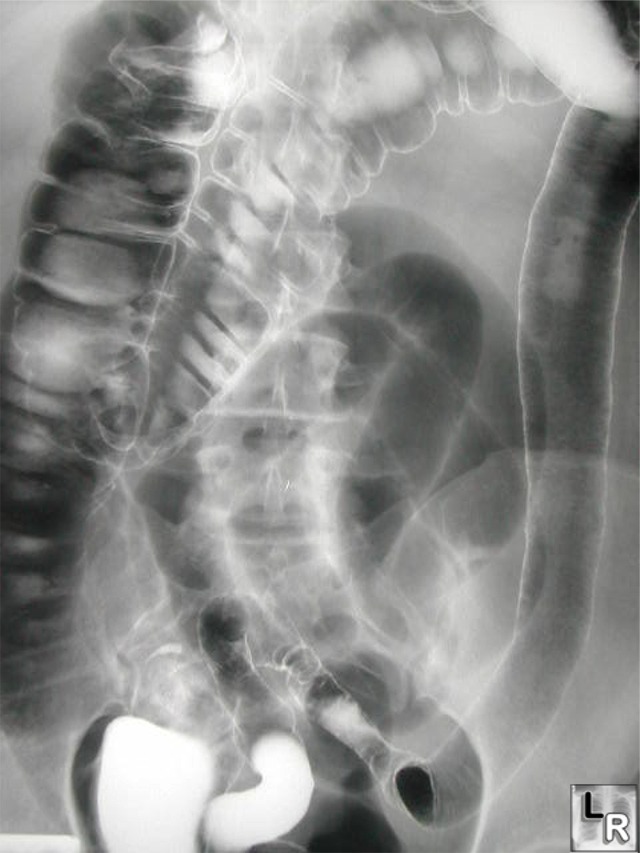The best way to appreciate and remember the differences between Crohn’s disease and ulcerative colitis, both inflammatory bowel diseases, is to juxtapose them and compare them in a pairwise fashion:
Transmural vs. Mucosal Only
- Transmural: This is the most important distinguishing feature of Crohn’s disease. The transmural nature of the disease is what leads to adhesions, fistulas, and abscesses, all of which are hallmarks of Crohn’s disease.
- Mucosa only: Generally, ulcerative colitis tends to affect the mucosa only. (Toxic megacolon, however, may affect the muscular layers as well.)
Abscesses: Crypt vs. “Regular”
- Crypt abscesses: Crypts, or crypts of Lieberkühn, are mucosal crevices that are seen in the normal gastrointestinal tract. In ulcerative colitis, these get plugged up with neutrophilic exudates, forming “crypt abscesses.” These are not “real” abscesses and do not require surgical drainage.
- “Regular” abscesses: Real abscesses are seen predominantly in Crohn’s disease. These are the kind that do not respond well to antibiotics alone and often require surgical drainage.
Longitudinal Continuity
- Continuous from rectum through colon: Ulcerative colitis. Think that colitis involves the entire colonic mucosa.
- Skip lesions: Crohn’s disease skips certain areas (including the rectum, as mentioned below!).
Rectum Sparing vs. Anus Sparing
- Rectum-sparing: Crohn’s disease is often Rectum Sparing. It is a “mouth-to-anus, except rectum” disease. Patient with Crohn’s disease have oral involvement (aphthoid ulceration) and anal involvement (fistulae).
- Anus-sparing: Ulcerative colitis usually spares the anus. Further, the rectum is almost always involved.
Ileitis: “Regular” vs. Backwash
- “Regular” ileitis: In Crohn’s disease, the small bowel is directly involved, leading to inflammation of the ileum. This is why diarrhea and malabsorption are common presentations in Crohn’s disease.
- Backwash ileitis: In ulcerative colitis, the ileum is not affected directly (because as the name suggests, ulcerative colitis affects the colon only!). However, there can be some ileitis as a result of the “backwash” (or reflux) of inflammatory mediators from the colon into the ileum.
String Sign vs. Lead Pipe Appearance
- String sign: In Crohn’s disease, the lumen gets extremely narrow in places (strictures) as a result of scarring, edema, and spasms. Contrast material in the lumen of the gut sometimes looks thinned out like a string.
- Lead-pipe appearance: In ulcerative colitis, mucosal scarring and sloughing destroys the normal architecture of the colonic mucosa, causing a lead pipe appearance.

“Ulcerative Colitis: Barium enema … demonstrates loss of haustral folds in the entire descending colon…. The colon has a ‘lead-pipe’ appearance.” Published with permission from LearningRadiology.com.
Cobble-Stoning vs. Pseudopolyps
- Cobble-stoning: Cobble-stoning is a feature of Crohn’s disease. Remember that one skips (skip lesions…) along the cobble stones.
- Pseudopolyps: Ulcerative colitis leads to mucosal erosions which undermine the remaining mucosa and make it look polypoid.
Bloody Diarrhea vs. Non-Bloody Diarrhea
- Bloody diarrhea: Ulcerative colitis. Think of bleeding ulcer.
- Nonbloody diarrhea: Crohn’s disease affects the small bowel directly so malabsorption with non bloody diarrhea is a prominent feature.
References
- Blackbourne, Lorne H., MD FACS, Surgical Recall, 6e (2011, reviewed here)
- Sabatine, Marc S., MD, MPH, Pocket Medicine, 5e (2013)


Leave a Reply